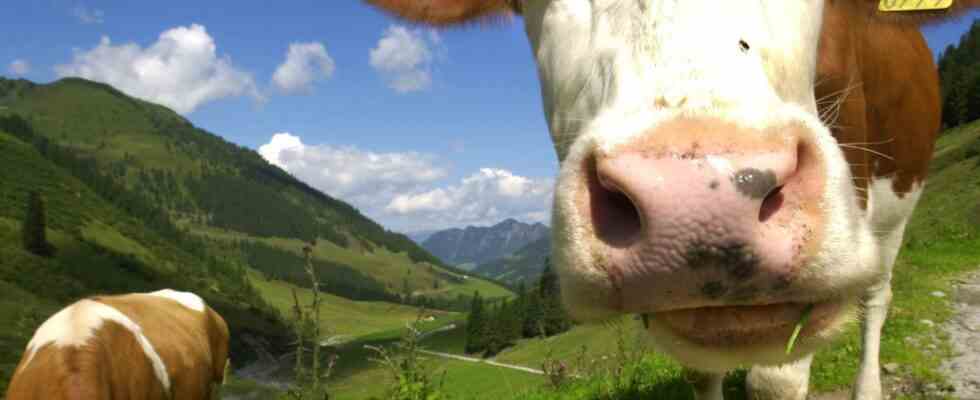Status: 02.12.2022 10:16 a.m
Sometimes a latte macchiato is enough to trigger a debate about appreciation and attachment to one’s homeland. That’s what happened in Tyrol – where an advertising film for tourism hit the Chamber of Agriculture hard on the stomach.
In Tyrol, an advertising clip that is actually intended to attract holidaymakers to the region has triggered a debate about an alleged affront to local agriculture. The source of all trouble: a latte macchiato with oat milk.
The tourism marketing organization Tirol Werbung published the clip, which lasted almost a minute and a half. The star of the video is the character of Krampus – the evil companion of Saint Nicholas in popular belief. The usually quite shaggy figure is mainly known in Austria, South Tyrol and Bavaria, always appears at Advent and is responsible for punishing bad children.
In the commercial, however, Krampus shows his endearing side: he finds a girl’s lost glove and brings it back to the young owner, whom he finds in an inn. As a thank you, the landlady asks what she can do for the Krampus – and he then orders the said latte macchiato with oat milk.
“Come as you are” – “Come as you are – everyone is welcome in Tyrol”, is the headline of the advertisement and, according to the marketing agency, is intended to attract “modern and urban clientele” for a holiday in the mountain region.
In Austria, Bavaria and South Tyrol it is part of the pre-Christmas period: the Krampus as the eerie companion of Saint Nicholas.
Image: AP
Affront to “authentic Tyrolean milk”
But the Krampus sipping oat milk was not well received by everyone in Tyrol. Especially from the Tyrolean Chamber of Agriculture there was heavy criticism of the advertising idea. President Josef Hechenberger was even “extremely shocked” by the “affront” to “authentic Tyrolean milk”.
In the advertising clip, the “daily work of the farming families” is not “respected accordingly,” emphasized Hechenberger in an interview with ORF. In addition, the farmers and their cows would ensure “that the cultural landscape – which serves as the backdrop for numerous advertising videos – is as appealing to locals as it is to tourists”. But instead, the video “simply puts food in the foreground that I don’t want to judge,” said the President of the Chamber of Agriculture, “but we don’t have it in Tyrol, which is imported and in no way forms the basis for the tourism supplies”.
Video should be revised
In an interview with the newspaper “Der Standard”, Patricio Hetfleisch, head of the communications department at Tirol Tourist Board, said he was somewhat “irritated by the vehemence” of the criticism from the Chamber of Agriculture. He’s sorry “if people may have taken this video the wrong way”. But this is by no means due to “a lack of appreciation for our farmers,” says Hetfleisch:
Dairy farming is very important in Tyrol. Processed grass, which becomes milk, is now part of the country’s identity and is a valuable raw material.
In order to ensure peace in the oat milk debate, Tirol Werbung has promised to revise the commercial and to show more “sensitivity” in its advertising formats in the future.
Advertising film with Cannes award
Incidentally, the Chamber of Agriculture started its alleged fight for the dairy farmers quite late: After all, the Krampus, with a preference for milk substitute products, has been advertising a trip to Tyrol for about a year on YouTube.
Since the beginning of the discussion about “real” and “fake” milk, the number of comments on the Internet portal, often mockingly related to the debate, has increased. “Now I would also like to go to Tyrol if vegans are also welcome there,” says one user. Another calls it “ridiculous” that farmers could feel badly represented by the video.
The jury of the Cannes Corporate Media & TV Awards also had nothing to complain about the spot – on the contrary: Just a few weeks ago, the video was awarded at the world’s only film festival for business films among around 800 entries from around 40 countries worldwide.

